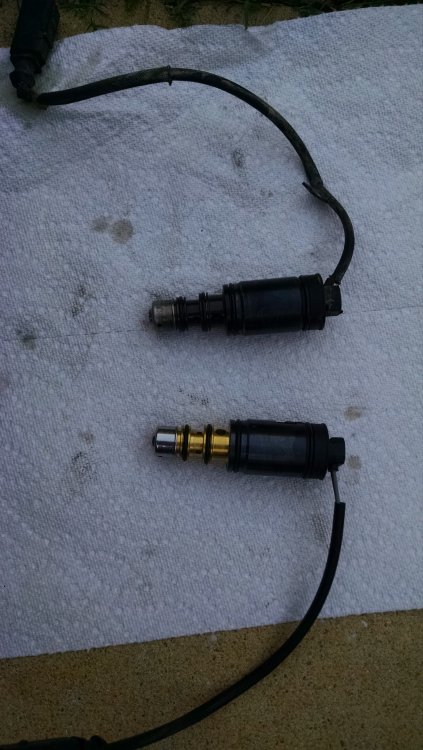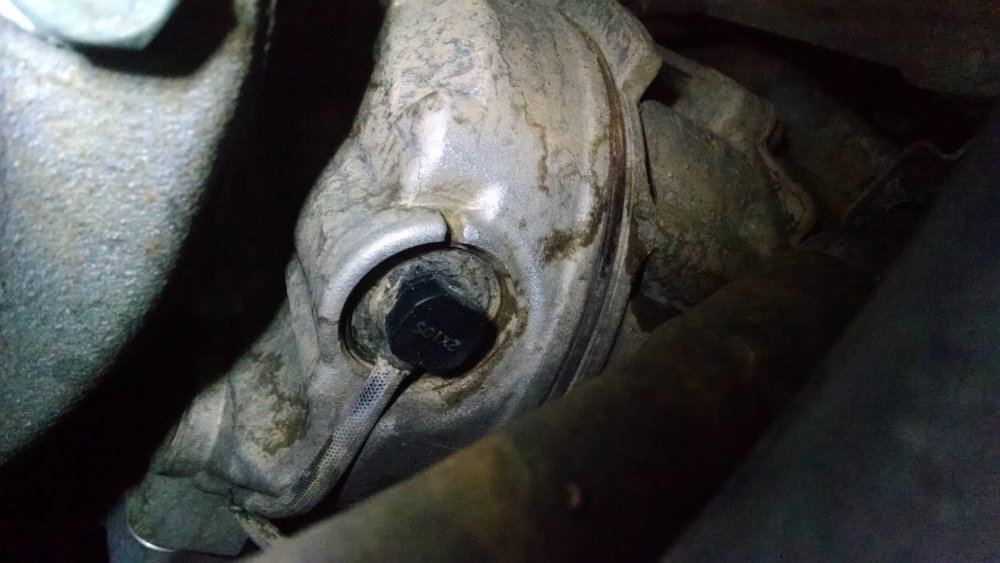I recently successfully self-diagnosed and repaired the A/C on my Cayenne. Total cost for parts and refrigerant ~$65. Vent temps went from 17 C before the fix to 4 C in ~24 C / 75 F ambient temps and high humidity. I will post details on the fix and the way to diagnose this particular problem (and other HVAC issues) in a new thread.
Anyways, one thing I discovered is that there is a lot of incorrect information out there regarding the HVAC system on these cars. One of the more pertinent items: The Cayenne uses a variable displacement compressor with an electronic compressor control valve for modulating the mass flow of refrigerant through the compressor. There is no compressor clutch, so to speak. This is not like the old compressors that we are all familiar with that use an electric clutch to cycle the compressor ON/OFF. Please gently slap anyone who talks about an electric clutch on the Cayenne compressor. If you are in doubt, just do a google search for "Cayenne AC compressor" and look at the pictures. There is only a single electrical connector and it routes to the back of the compressor; this is the compressor control valve.
The HVAC control unit adjusts the refrigerant flow to meet the required demands. Instead of cycling a clutch on and off, a swashplate inside the compressor adjust the stroke of the compressor pistons to realize the specified refrigerant mass flow. No more ON/OFF cycling, just nice consistent cooling--in theory, at least (and when everything works).
Fuse 11 that Loren mentions powers the compressor control valve. The negative lead goes to the HVAC control unit. The valve is driven by a PWM signal, likely current controlled.
To the OP (Bichito): Sorry to say it, but your compressor is toast. The part that you are referring to as a clutch is actually a sacrificial break-away mechanism. The idea is that if the compressor locks up then this part will break in two and allow the pulley to spin so that your other accessories are still driven. I can think of no other scenario for your situation other than a catastrophic failure of the compressor. If you are lucky, then the compressor didn't spit it's guts throughout your refrigerant system. Either way, you will need a new compressor (and drier, at a minimum) and a very thorough cleaning of the refrigerant system (get this part wrong and you may be doing the whole job over again). Sorry...
@neoplanet: Your problem may be far less serious but we need more information. You wrote that the A/C shop said that everything checked out OK. What does this mean? I'm assuming that this at least means they did a visual inspection of the A/C compressor and did not see anything obviously wrong (like what Bichito found). Did they give you any pressure numbers? Do you get any cooling whatsoever? You wrote that they said there was no voltage going to the compressor. I'm not convinced they checked this correctly. First of all, hopefully they realized that the connector they were looking at was for the compressor control valve (not a clutch, as it doesn't have one). According to the manual that I have, +12 V should be on the red/white wire. Now, if they disconnected the connector and attempted to check the voltage across both leads then they would likely run into a problem because 1) the valve is controlled by a PWM signal (you need an oscilloscope, not a multimeter) and 2) the control valve is most likely current controlled: if you take the valve (which is low impedance) out of the circuit then the computer will recognize this as a problem and probably will not drive the line low. I would totally expect them to find 0 V if they tested things this way. You can test the +12V wire by connecting one lead of a voltmeter to the red/white wire and the other lead to anywhere on the car that is grounded. To properly test that the electronic signal to the valve, you need to keep the valve in circuit and probe across both wires with an oscilloscope. Frankly, I wouldn't waste my time doing this at the moment. First thing I would do is get some pressure readings. If your high side pressure is OK then you can forget about the electrical checks on the control valve. Once I know your pressure readings I can make a suggestion as to what I would check next.
Brett
p.s. To address the original question, there is no A/C relay on the Cayenne and therefore no "A/C relay location". :) Edit for clarification: I should have said that there is no "A/C compressor clutch relay". I also just noticed that this thread was a year old. Oops!




